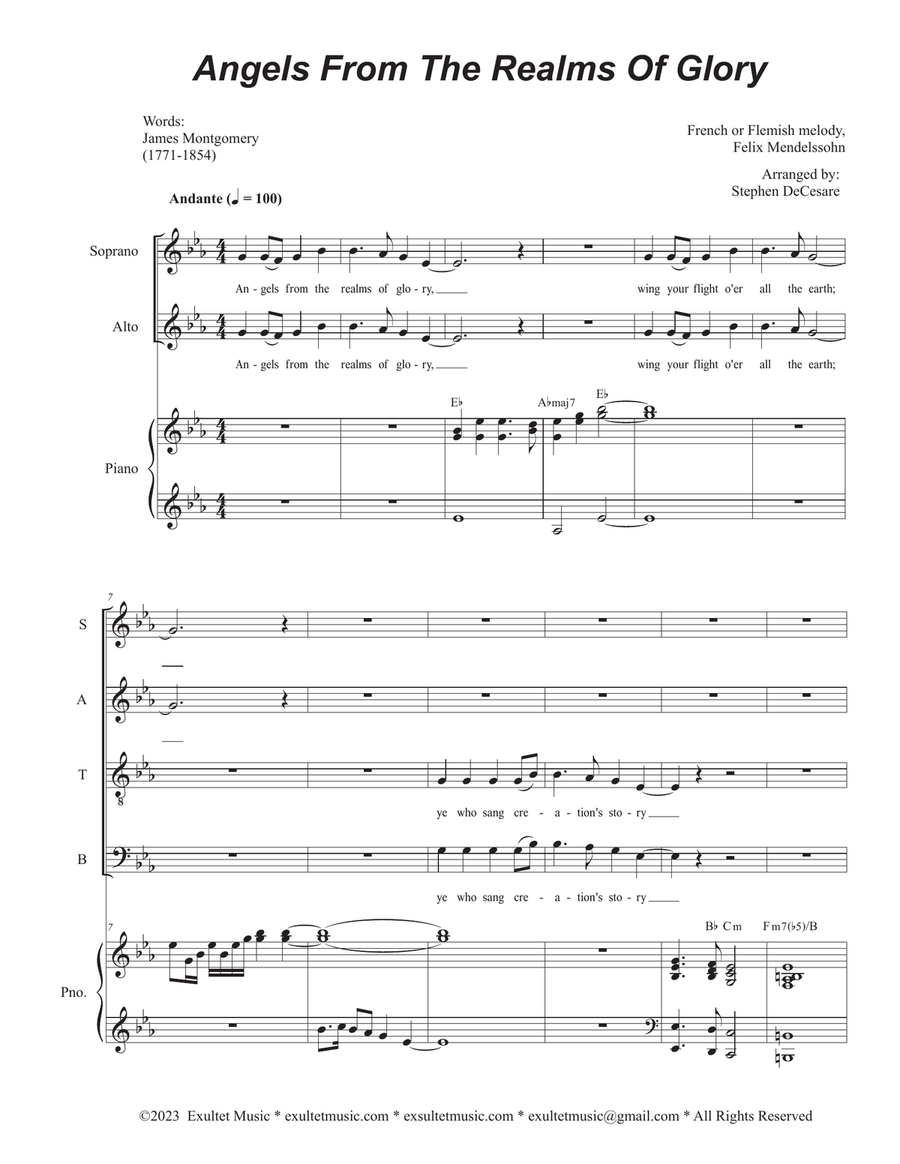Piano,Vocal,Voice - Level 2 - Digital Download SKU: A0.1259563 By Stephen DeCesare. By Traditional, Felix Mendelssohn. Arranged by Stephen DeCesare. Christian,Christmas,Sacred,Standards,Traditional. Score. 11 pages. Exultet Music #852868. Published by Exultet Music (A0.1259563). The Christmas carol that is widely used in many churches and performed in concerts throughout the world has been freshly arranged for a Vocal Quartet (SATB) with Piano accompaniment. Â Accessible and appropriate for any venue.
